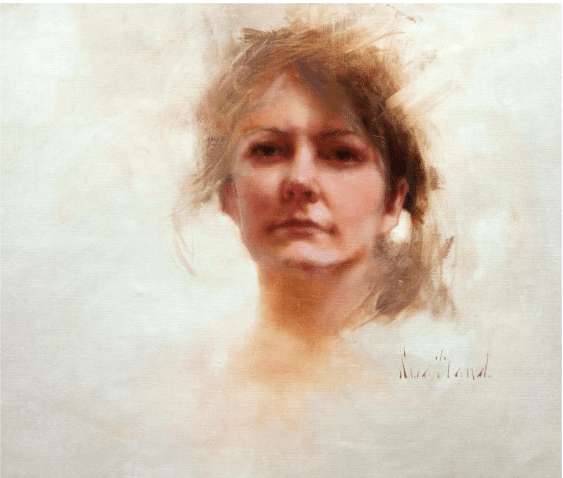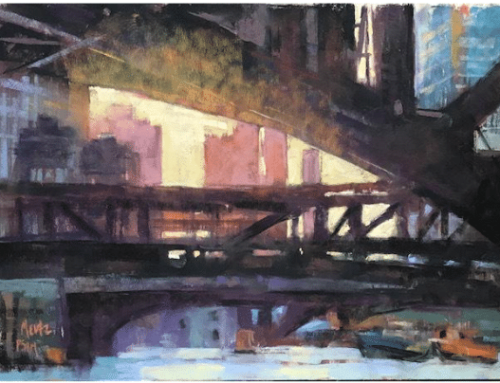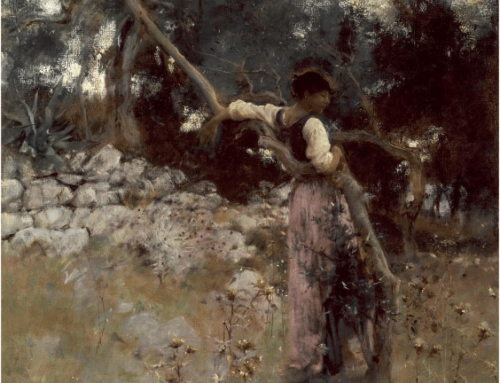Getting an accurate image into a human portrait is hard enough, right? Then there’s getting the LIFE into it. To those not privy to the process, a successful finished portrait can seem like a miracle, destined to become a treasured object full of inexhaustible emotion and magic.
At the outset, a combination of skilled observation and sound underlying structure is needed for getting the proportions, dimensionality and edges right. Some knowledge of human anatomy helps organize and support the “expressive” details, meaning the specific features of the model through which the artist reads and interprets character. There are many website dedicated to anatomy for artists, easily found with a Google search.
However, if possible, connecting with the sitter really helps get the artist beyond the surface in search of the “true self” of the subject. Finally, a pinch or two of creative daring helps capture nuance, life-like freshness, and sparkle.
The following three artists take us behind the magic and explain their unique take on these and other skills in their own words.
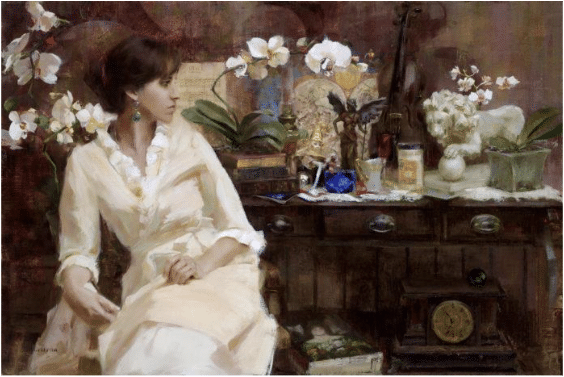
Katie Swatland, Fiori D’Aria, 24 x 36 inches, Oil on linen
Diving deeper into any one of these three categories, Structure, Personalization, and Expression, cannot fail to make your best portraits better.
- Structure
Oil painter Katie Swatland acknowledges that our own physical construction is one of the purest and most complex problems for the painter modeling three dimensions in two-dimensional space. Katie has published a wonderful article in our sister publication Realim Today on The Underlying Structure of Figurative Art with step-by-step photos of how she builds the portrait.
Katie takes you through the three most important technical processes, from the skill of good observation, the ability to convey the three-dimensionality of form convincingly, and the cultivation of edge, color and value sensitivity. All stem, she writes, from that crucial understanding of the nature of the underlying structure.
- Personalization
Watercolor artist Karisa Keasey believes that knowing the person you paint changes the way you paint them. In “When You Can’t Go Home: Portraits of Refugees in the Pacific Northwest,” she explains how she adjusts composition, color, foreground, and background to go beyond stereotypes and show a more complete picture of one’s story when painting portraits.
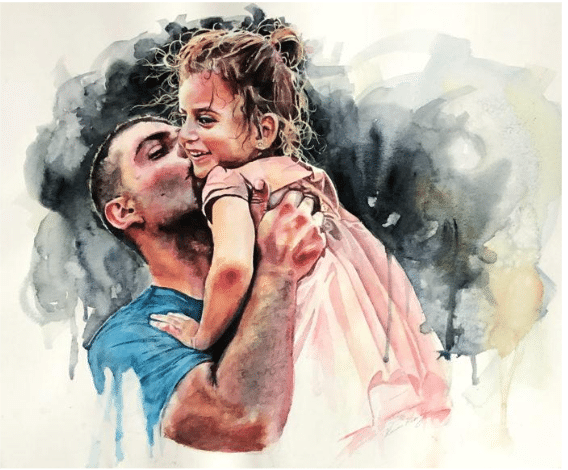
“Alan and Aleen,” watercolor, 16 x 20 in., by Karisa Keasey
Working one series at a time, Karia starts her projects with research. For “Alan ane Aleen” (above) and the other watercolors in the series, she read about the refugee crisis, the process of becoming a refugee, refugee camps, and resettlement. “I learned that over 70.8 million people are displaced in the world currently, and over half of them are children,” she says. “This is the worst it has been since WWII, the numbers still climbing. These refugees are people who cannot return to their homes because of unbearable persecution and war. When they have nowhere else to go, they apply for refugee status with the United Nations and, if they are lucky, they are placed in a country that is willing to resettle them. Based on all that I read, I began to plan my paintings.
- Emotion and Expression
Portrait painter Rose Frantzen in this video breaks down her process in step-by-step detail, detailing how to load brushstrokes with emotion, how to connect to your sitter, and how to wed likeness to the creative beauty sitters love to see, along with many other aspects of her craft.
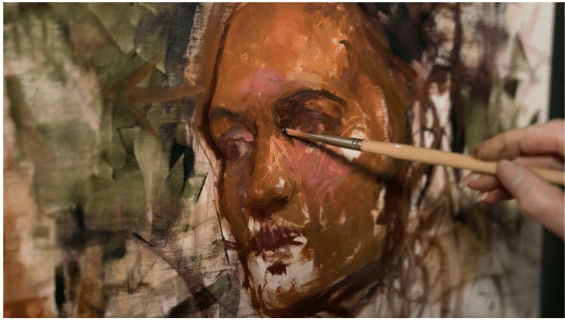
As you can read in this article originally published in Realism Today, Rose recently exhibited a major series, “Portrait of Maquoketa,” a collection of 180 portraits, painted of her townspeople, at the Smithsonian’s National Portrait Gallery. The project is now an installation in the Figge Art Museum’s permanent collection, which includes a 315 square foot anamorphic landscape, voice, and music.
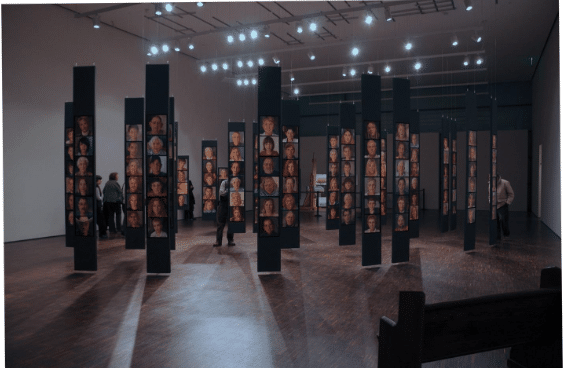
Portrait of Maquoketa installation by Rose Frantzen
Typically, the subject in a portrait is a person who can afford to commission a painting or someone the artist finds intriguing for his or her own reasons. However, for this project, Rose painted portraits from life of anyone in her hometown that wished to pose for her.
“I wanted to paint my neighbors and fellow Maquoketans without any selection or choice on my part, attempting to capture a direct portrayal of the people around me,” says Rose. “Together, we could democratize portraiture, allowing anyone to be painted just by showing up and participating.”
Rose Frantzen was also featured on the PleinAir Podcast with Eric Rhoads. Listen as she shares the following:
• What it means to fail forward, and how it’s “actually a lovely process”
• Why there’s a resurgence of painting today
• Her suggestions for those who are new to painting (“I think the main thing is time behind the brush, and whatever gets that brush in your hand is where you need to be.”)
• Thoughts on the myth of talent, and much more
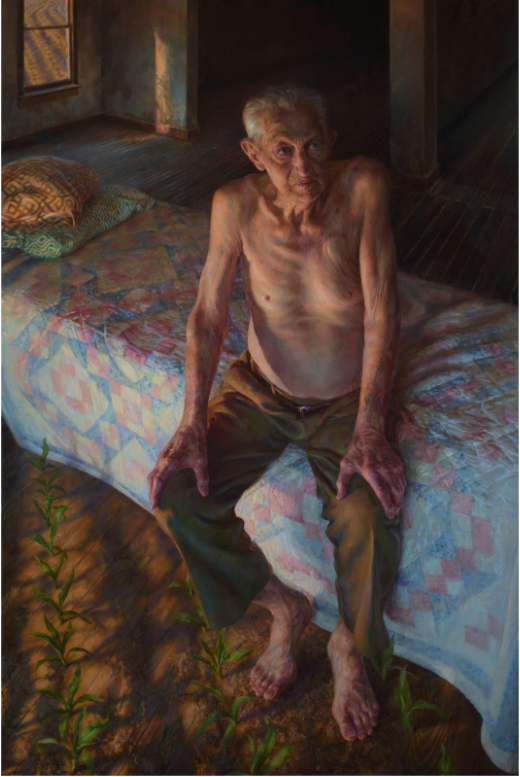
Rose Frantzen, Spring Corn, 72 x 48 in.
Frantzen’s concepts and approaches to painting are full of electrifying expressions balanced with a culmination of disciplines she’s mastered throughout her life.
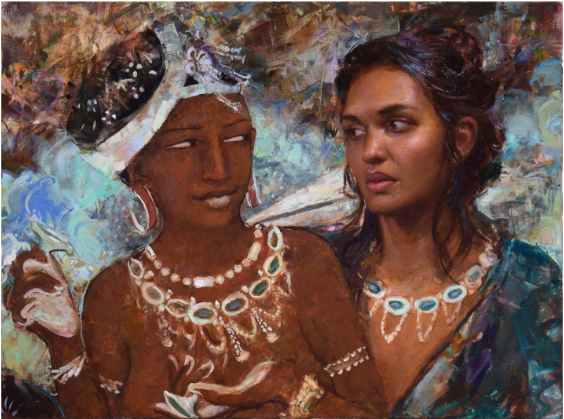
“Haunted By What Neither Is,” 24 x 30 in., by Rose Frantzen
Another recent project was filming the portrait painting workshop “Portraits in Conversation with Rose Frantzen.”
Frantzen is a frequent demonstrator, workshop instructor, guest lecturer, and panelist discussing art and the artist’s life in the 21st century at museums and national art conventions, and her paintings have been featured in national and international art magazines, podcasts, and journals. Frantzen is represented by Old City Hall Gallery in Maquoketa, where she shows with her husband, Charles Morris.Frantzen is a frequent demonstrator, workshop instructor, guest lecturer, and panelist discussing art and the artist’s life in the 21st century at museums and national art conventions, and her paintings have been featured in national and international art magazines, podcasts, and journals. Frantzen is represented by Old City Hall Gallery in Maquoketa, where she shows with her husband, Charles Morris.
Study with Rose in this art video workshop (click here) and you’ll discover:
• Types of brushwork that evoke emotion from your viewers
• Methods for telling meaningful stories through your paintings
• How Rose overcame the challenges of painting alla prima — and how you can too!
• When it’s a good thing to scrape down your entire painting … it’s true!
• Create effects you’ve never thought possible by using both traditional and unusual materials
• Attack your canvas with chaotic abandonment … and then shape your concepts into a finely tuned, highly disciplined work of art
• Rose’s special tool for achieving absolute realistic likeness without losing the creative beauty of a portrait
Visit EricRhoads.com (Publisher of Realism Today) to learn about opportunities for artists and art collectors, including Art Retreats – International Art Trips – Art Conventions – Portrait Painting Art Workshops (in person and online, including Realism Live) – And More!
.

